
Полная версия
The most detailed guide around Circum-Baikal Railroad: Irkutsk, Listvyanka, Slyudyanka, Shelekhov

The most detailed guide around Circum-Baikal Railroad: Irkutsk, Listvyanka, Slyudyanka, Shelekhov
A. D. Katashevtsev
© A. D. Katashevtsev, 2023
ISBN 978-5-0060-0407-8
Created with Ridero smart publishing system
Guide Book Route Map

Guide Book Route Map
Introduction
The book is dedicated to the most complex steel line in Russia – the Circum-Baikal Railway (CBRR), which was built on the steep shore of Lake Baikal at the beginning of the 20th century by the best engineers of their era. It was there that I began my professional journey as a tour guide. Today this is the most intense excursion in the Irkutsk region in terms of the number of topics that it covers.
On the pages of this work, I would like to share my knowledge accumulated about these places. I will try to describe the history of the sights that we meet on our way as interestingly and briefly as possible. In addition to the main route of the Circum-Baikal Railway, attention is paid to remote areas of the city of Irkutsk, which for various reasons were not included in my first book, as well as to the favorite tourist centers of the Baikal region – Listvyanka and Slyudyanka.
The book reflects not only the main historical plots of the display objects, but also relevant information on archeology, botany, geology, geography, demography and logistics. The book is intended both for guests of the Irkutsk region who are interested in its history and nature, as well as for practicing specialists in the field of local history and excursion studies.
Focusing on the footnotes in the margins, you can easily move around both urban areas and along the railroad. I hope, thanks to these lines, you will love Irkutsk and Baikal the way I love them. I wish you pleasant reading and travel through the pages of the history of the Baikal.
Novo-Lenino Microdistrict
Frankly, I thought for a long time how and where to start our journey along the old Circum-Baikal Railroad (hereinafter CBR). I would like to go as accurately as possible along the old route of the Trans-Siberian Railway, as it used to pass through Irkutsk, in order to fully reflect all its features and details. Therefore, we will start our journey from the old Innokentyevskaya station (nowdays Irkutsk-Sortirovochny, Vokzalnaya st., 9A) in Novo-Lenino microdistrict of the city of Irkutsk, from where the CBR is historically counted.
Meeting of the first train at Innokentievskaya station, 1898
The first rails came here back in 1896 and helped to appear on this site a new working settlement on the lands of Irkutsk Ascension Monastery, the very one that is inextricably linked with the name of the first Irkutsk Saint – Innocent Kulchitsky. This is how the name of this initial station of the Circum-Baikal Railway came from. On July 27, 1898, the first train was met here in Irkutsk. Only three weeks later it will reach the main passenger station of the city.
The population of the village grew very quickly, and in five years more than a thousand people lived here. At the same time, people who were completely unrelated to the railway moved here. For example, in 1905, some of the soldiers who returned from the Russian-Japanese war settled here in dugouts, who immediately entitled the northern part of this settlement «Port Arthur» in memory of the fortress lost in the Far East. The city government fought against unauthorized constructioning for a long time, but in the end it simply renamed the area into Novo-Innokentievskaya Sloboda.
Innokentyevskaya station, early 20th century
During the Russian Revolution, from Decem-ber 14, 1917 to July 9, 1918, the Soviet of Workers’ and Soldiers’ Deputies was based at the station, until it was driven out by a detachment of Czech legionnaires. On February 14, 1920, this place became the scene of bloody battles with the units of the White General V.O. Kappel, retreating from Irkutsk to Baikal. Just a few months later, in April 1920, the district received its new name – Novo-Lenino.
Innokentievskaya station, early 20th century
On March 28, 1932, the construction of the largest aviation plant in Eastern Siberia began, opposite the railway lines, which launched the production of several dozen aircraft from almost all the russian leading design bureaus. During the World War II (hereinafter WWII), it handed over 2174 combat aircraft to the front. After the Great Victory, already in 1951, it gave the country the world’s first torpedo bombers Tu-14 with three turbojet engines. And in 1973, it was the first to start assembling the MiG-27 supersonic fighter-bomber, the first carrier of a new generation of high-precision weapons in the USSR. It was the only plant in the country where the design bureau of A.I. Mikoyan did not create a branch at the plant contrary to established practice. Today, in the best traditions of the past, the plant assembles the Yak-130, SU-30SM, as well as the long-awaited family of medium-range aircraft MS-21.
MS-21 taking off from Irkutsk-2 airport, 2017
In the area of the modern station, today there is a museum of the locomotive depot, which occupies a building from the tsarist era (Obraztsova St., 30). Near the station there is a memorial in memory of those who died in the WWII and an exposition of railway equipment. In the post-war years, Hero of the Soviet Union D.V. Zhilkin worked here as the head of the technical office. Nearby you can see the locomotive-monument L-3228, similar to those that today drive tourist trains along the СBR. There is also a track measuring trolley, an isolating removable tower, a universal sleeper changer machine MSHU-5, a single-winged semaphore and a hydrocolumn. Opposite, by the railroad tracks, a few years ago you could find an old water tower and a water-lifting building, but in 2010 they were dismantled.
Monument locomotive L-3228
On the other side of the road is Molodezhnaya Grove, which hides the buildings of an old medical town that appeared here in 1908. Among them, the building of the railway hospital (Obraztsova St., 27 K1), made according to the project of I.P. Mikhailovsky back in 1904. Today in this park you can find many sculptures, a sports ground for volleyball and tennis, and three children’s play areas. Here you can also see the monument to the engineer and revolutionary E.K. Špaček, recently moved here from the locomotive depot, who gave his life for the power of the Soviets. Being a Czech by nationality, he was hanged by his fellow tribesmen on a lonely pine tree on July 19, 1918, with a large gathering of people at the place where the Lokomotiv stadium is now.
Monument to the revolutionary E.K. Spachek
Among the dense vegetation from Rosa Luxembourg Street (Akademika Obraztsova Street, 27A) hides one of the most forgotten temples of Irkutsk – the chapel in the name of Panteleimon the Healer. It was built in 1906 and was originally intended for the funeral of the dead in the medical town. After the revolution, it was converted into a city morgue, as which it existed until 1980, when a tuberculosis laboratory was placed here. Today it is one of the most dynamically developing spiritual centers of Irkutsk. Since 2010, it is planned to build a full-fledged church.
Chapel in the name of Panteleimon the Healer
In addition to the hospital and the church, a one-class school was opened in this grove back in 1900 at the expense of the Ministry of Railways. In 1935, it became school number 38 in Irkutsk, and half a century later it received a modern building and a new number (Obraztsova St., 23). Here in the 1940s worked as the teacher of the Russian language the creator of the novel «Far in the country of Irkutsk» A.V. Zverev.
If you walk along Vokzalnaya Street, you can still see many residential buildings built according to standard designs of the Ministry of Railways at the beginning of the 20th century. In one of them, in 1898, the future writer, naval officer and member of the Presidium of the Supreme Soviet of the USSR L.S. Sobolev was born into the family of a retired officer of the Russian army. In 1906, among these houses, a wooden church of St. Innocent of Irkutsk appeared, which was converted from a fire station building according to the project of P. Alkanov. It was planned to build a more solid temple, but the revolution interfered with the plans, and in 1934 it was closed. Its location and forms are reminiscent of a house in the style of the MPS (Vokzalnaya St., 9A).
Saint Innocent Church with a fire wagon, 1906
Well, we will continue to move along the street named after the twice winner of the Stalin Prize in the field of transport, Academician V.N. Obraztsov. At its beginning, in the Sarafanovka terrain, another amazing church lurked. This is the oldest wooden temple preserved in Irkutsk – the St. Michael the Archangel Zhilkino’s Skete (Obraztsova St., 1), built in 1874 at the place where the first Bishop of Irkutsk, St. Innocent, liked to stop on his way to Malaya Elan. Two springs are also named in his honor, which formed a small lake with time here. In addition, this temple was one of the first after the revolution to open its doors to parishioners. Already in June 1945, services began to be held here, and since 1987, the oldest parish school in the city in the name of Saint Sophrony of Irkutsk with an extensive library has been operating at the church.
Michael the Archangel Zhilkinsky Skete
On the other side of the lake, the remains of an ancient cemetery at the St. Innocent Skete are visible. It was closed in 1937, but about a dozen tombstones and fences have survived today. According to one of the urban legends, it was here in the spring of 1920 that the body of the Supreme Ruler of Russia A.V. Kolchak was secretly buried. However, Ust-Kuda, Meget and even the Monastery of Icon of Our Lady of the Sign are named among the possible places of burial, and it is virtually impossible to verify the authenticity of these versions.
Old cemetery at Innokentievsky Skete
Not far from the cemetery, behind Rosa Luxemburg Street, on the Novo-Innokentievsky outskirt, there is a garden of the Latvian breeder A.K. Thomson (St. Thomson, 3), which since 1914 began to supply the whole of Irkutsk with rich harvests of ranet. Thanks to this talented botanist, 230 varieties of apple trees, 77 species of fruit and berry plants, 47 spe-cies of ornamental trees (in particular, elm, oak, maple, linden and hazel, rare for Siberia) grew here by the 1930s. Today, there are more than 150 species of relic plants on the territory of the garden, and since 1996 Sovetsky Lane has been named after Thomson.
The garden of breeder A.K. Thomson
Right behind its green spaces rise the walls of the Irkutsk ceramic factory, which since 1929 has been the main supplier of bricks in Irkutsk. It is interesting that the first such enterprise appeared here back in 1872. Along the Trans-Siberian Railway stretch Novoleninsky swamps, which since 2010 have been included in the special nature protected area called «Bird’s Harbor». And this is not surprising, since more than 200 species of birds nest on this lake and swamp complex, right in the center of the city, besides factories and the railway. Among them there are also the Red Book black stork, gyrfalcon, peregrine falcon, saker falcon and steppe eagle.
Novoleninsky Swamps
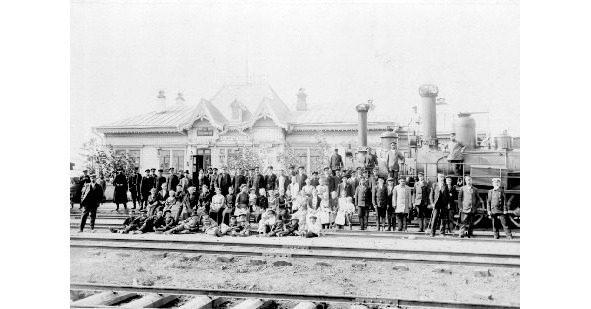
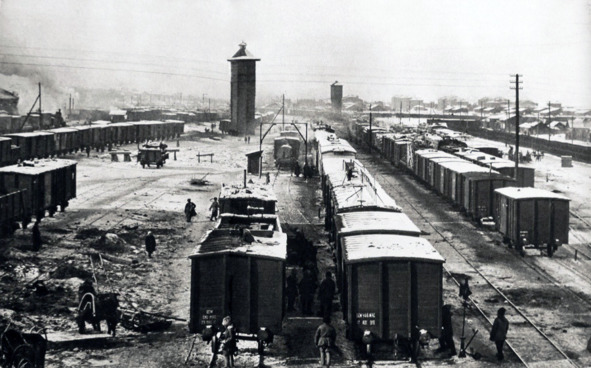





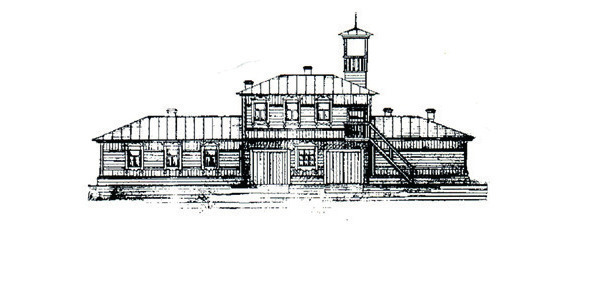
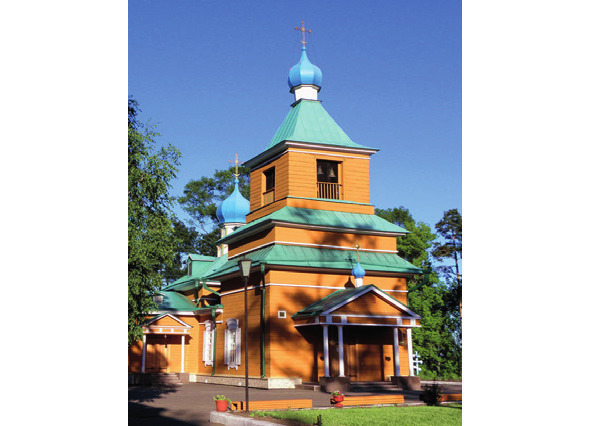
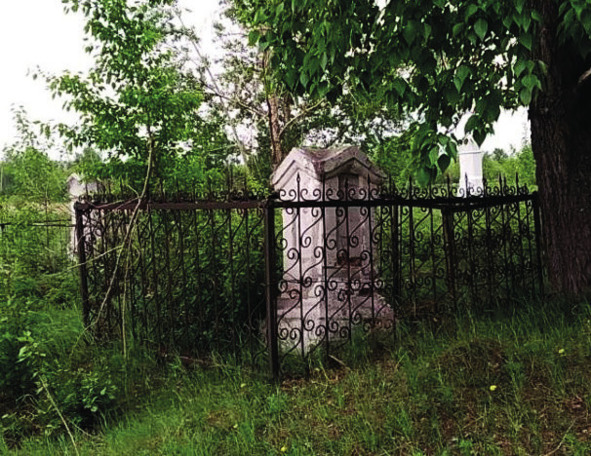
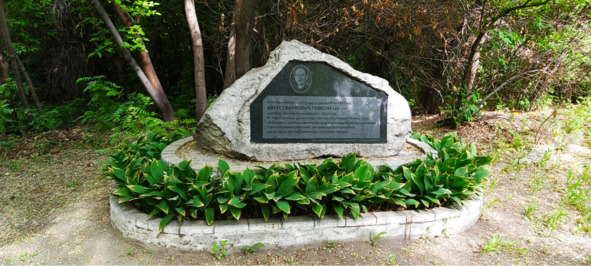
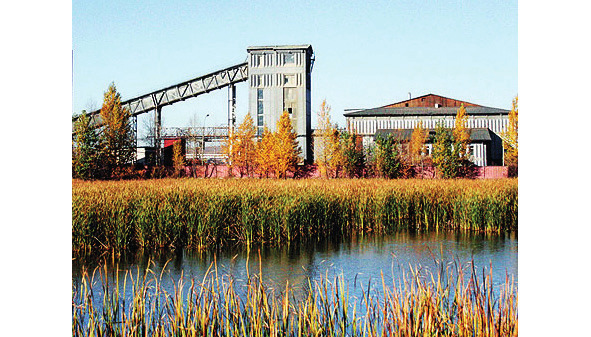
Irkutsk II Microdistrict
Next, we will go along the Novo-Lenino bypass road to the junction, near which the plant of reinforced concrete structures of the East Siberian Railroad (hereinafter ESR) has been operating since the 1980s. Here we turn left at the junction under the bridge, towards the Irkutsk II district by the Leninsky Trakt, which appeared as a permanent connection with the city center only in 1935.
Having passed the street food market «Parus», as well as the «Bazar» and «Priboy» shopping centers (Traktovaya St., 35), we will see on the right hand behind the fence the far drive beacon of the «Irkutsk II» military airport. Behind it, we have to overcome three railway crossings, leading in in the following sequence: the first – to the Irkutsk mill, meat processing plant and woodworking enterprises; the second – to the branch of the Buryat meat processing company, the warehouses of the Federal Reserve Agency and the Irkutsk vegetable warehouse; and the third – to the blanking and stamping production of the Irkutsk aircraft factory. The latter produces up to 70% of the details of future aircraft in three workshops. The personnel of the plant have been forged here since 1934 in the technical school of aircraft construction and metalworking (Mira str., 14). It was here in 1939—1940 was studied the future Hero of the Soviet Union A.D. Evstigneev.
Hero of the Soviet Union A.D. Evstigneev, 1940s
From Mira Street (former Monastyrskaya) we will turn right onto Maria Ulyanova Street (previously known as Detskoy Radosty and Krestovsky Lane), walking round the territory of the blanking and stamping plant, we will drive to the Siberian Partizans Street (formerly 9th or Tverskaya). The latter is named in memory of the liberation of Irkutsk from the admiral Kolchak squads in February 1920. Once it was the very outskirts of the Innokentievskaya settlement, but since the 1930s, it has become the arterial road of this area.
Fire Department of Aircraft factory
The first thing that attracts attention is the beautiful building with a tower standing to the right of the road (Sibirskih Partizan Str., 2) – this is a fire station built in 1936 according to the project of architect B.M. Kerbel. Opposite it is the M. Gorky Park, which in 2018 was renamed to the Peace Square. It is symbolic that at the very end of this territory there is a monument «Woman with a Child» – in memory of a brave lady out of this district, who saved a baby from a fire in 1935. Now the sculpture has been restored, and in 2000 the participants of the Great Patriotic War planted the «Veterans’ Alley» here. And this is not accidental, since a street passes along the park, named in memory of the Hero of the Soviet Union V.F. Zhukov, who worked in the lumber industry of Irkutsk and died in 1944 during the liberation of Sevastopol. His portrait can be seen in the form of a monumental panel (artist Y.N. Kvasova) on one of the houses (Mira Str., 62).
Panel with a portrait of the Hero of the Soviet Union V.F. Zhukov
Right behind the crossroads rise the walls of the oldest residential building on Siberian Partizans Street, built back in 1939 by architect V.N. Volkov (Sibirskih Partizan Str, 4). From the moment the house was commissioned and until his death in 1997, the Hero of Socialist Labor and an honorary citizen of the city, the milling operator of the aircraft factory M.D. Parkhomenko lived here. On the other side of the street, behind a typical building, there is a brick house No. 3A, in which from 1963 to 1996 lived the writer and artist V.P. Starodumov.
Writer and artist V.P. Starodumov, 1990s
We continue our way to Muravyov Street, formerly known as Upravskaya Lane, named after the village administration located here. Once this street led straight to the Innokentievskaya station, from where the formation of this area began. At the intersection on the right side there are two residential buildings (Sibirskih Partizan Str., 16 and 18), in which the documentary film director B.P. Rakin and poetess N.K. Sidorova were lived.
In the common courtyard of these buildings until 1955 there was an old Tatar cemetery. From the side of the quarter, bounded by the streets of Prosveshcheniya (previously Bazarny Lane), Aviastroiteley (Zhdanova), Zhukova and Sibirskih Partizan, the Innokentievsky graveyard adjoined it. Today, on the place of these necropolis, there are many social facilities, such as the maternity hospital and the medical department of the Irkutsk aircraft plant, school No. 12 and kindergarten No. 34. During their construction, many remains were found and burned right there on the spot in 1950’s.
Aircraft factory polyclinic, 1935
In the meantime, we will turn right onto Muravyov Street. Here we see an area of two-story cozy houses that were built in the early 1950s for the factory elite. In one of these (Ukrainskaya Str., 13) in 1958—1963. lived one of the most famous Heroes of the Soviet Union in Irkutsk – ace pilot I.V. Kuznetsov. He made more than 350 sorties, personally shot down 9 aircraft and twice made an aerial ramming. Despite this, he was awarded the Star of the Hero only in 1991, shortly before his death.
Hero of the Soviet Union I.V. Kuznetsov, 1940s
The street ends at the Irkut-Zenit stadium, built in August 1945, where the factory football club of the same name existed until April 2021. Apropos this site was once called among the contenders for the world bandy championship. We will turn left twice and drive along the territory of the Komsomolskiy park, which appeared thanks to the youth of the aircraft factory, who built a wonderful place to relax with their own hands during labor Sundays in 1948 on the site of a swampy and unsuitable for construction area.
In 2010, for unknown reasons, the Tu-124 aircraft and the Mi-4 helicopter exhibited here in 1984 were removed from southern part of park. In their place in 2016, the children’s town «Chipollino» was transferred from the center of Irkutsk and then almost immediately closed. Today, the fate of the only well-equipped park in this part of the city is being decided.
Tu-124 in Komsomolsky park, 1980s
Moving further along Pulkovsky Lane (formerly Popovsky), we turn right and again find ourselves on the street of Sibirskih Partizan. On the right, the walls of the building rise, where since 1958 the oldest in the district library No. 5 (Sibirskikh Partizan St., 22) has been located, in which the Museum of History and Culture of the Leninsky District operates. Writers V.M. Rudykh, V.V. Ginkulov, L.I. Sukharevskaya, D.M. Tsvetkov, S.V. Korbut and many others assisted in gathering the collection and information.
Innokentievskaya Library No. 5
On the other side of the road there is the first aircraft factory secondary educational institution – school No. 37 (Sibirskih Partizan Str., 19). It accepted first students back in 1932, but than moved to this building after WWII. On a Saturday afternoon, December 6, 1997, the worst plane crash in the history of Irkutsk took place right behind the school.
Tail of An-124-100 «Ruslan» on the house on the Mira Str., 120, 1997
At 14:42, during takeoff from the airfield of the aircraft plant, due to the failure of three engines, the An-124-100 «Ruslan» aircraft crashed onto residential building No. 45 along Grazhdanskaya Street, hitting with a wing the building of orphanage No. 1 and leaning with its tail against house No. 120. 8 crew members and 15 passengers died on board, as well as 49 people on the ground, including 14 children. More than 70 families were left homeless.
In 1999, a church in the name of the Nativity of Christ appeared on the site of the destroyed house. Installed a memorial with 72 chrome candlesticks, according to the number of victims. An orphanage was also restored and a part of the house along Mira Street, where the tail of the plane hit, was repaired.
Church in the name of the Nativity of Christ, 2000s
Having paid tribute to the memory of those who died in a terrible plane crash, we will continue our journey along the street of the Sibirskikh Partizan, where in the house No. 30 in 1969—1979 lived O.I. Lapa – the first Hero of Socialist Labor of the Irkutsk Aviation Plant.
Yak-28 bomber at the entrance of the Irkutsk Aviation Plant
The street ends at the entrance of the Irkutsk Aviation Plant, where the first large-scale supersonic bomber in the USSR Yak-28 majestically soared into the sky – the same aircraft that brought the company to the ranks of the industry leaders and brought it well-deserved fame. In front of the machine, in the same square, there is a memorial made in 1968 with 338 names of aircraft factory workers who did not return from the front of WWII.
Among the famous workers of the enterprise there are four Heroes of the Soviet Union. From February to June 1942, before being sent to the front, here worked among the detachment of «naval twenty-five thousandths» M.N. Tsukanova – the only woman who received this high rank during the Soviet-Japanese war. And in 1934—1936 already familiar to us V.F. Zhukov worked on the construction of the plant. In 1936—1939 infantry captain N.K. Romanenkov worked here as a gas welder, who distinguished himself in battles in Poland, but was killed near Berlin. The famous ace pilot I.V. Kuznetsov also gave many years of his life to the enterprise, being worked here in 1934—1938, 1946—1951 and 1954—1963, but later moved with his family to Yeysk, and after to Gelendzhik, where he is buried.
Hero of the Soviet Union M.N. Tsukanova
Let’s turn right onto Makarenko street. The first house on the right side is special (Sibirskih Partizan St., 32), and not only because here lived Hero of Socialist Labor aircraft factory mechanic A.I. Temnikov in 1985—2008. On the evening of June 20, 1976, one of the most famous Russian bards in the 20th century V.S. Vysotsky gave an impromptu concert from the balcony of this house, performing seven songs for passers-by. The next day he left Irkutsk and never returned. The purpose of his visit was to work on the book «Black Candle», which he wrote in collaboration with the Irkutsk writer L.V. Monchinsky, to whom the bard came to visit. During the week they visited Listvyanka, Bodaibo, Homolkho, Aprelsk, Nizhneudinsk, Zima, Moty and Chistye Klyuchi.
V.S. Vysotsky and L.V. Monchinsky in Irkutsk, June 14, 1976
Behind the house hiding the building of school-evacuation hospital No. 34, which since 2012 bears the name of M.N. Tsu-kanova. Here in 1952—1955. studied the future Vice-Admiral of the Black Sea Fleet V.N. Sergeev which is one of thirteen people awarded the Order «For Service to the Motherland in the USSR Armed Forces» I degree – the rarest award of the USSR. Next to the school is one of the most beautiful buildings in Irkutsk II – the Palace of Culture named after Y.A. Gagarin (Makarenko Str, 6), created in 1936 according to the project of the civil engineer of the Irkutsk aircraft plant N.A. Chetverikov. Under his direct leadership, all the main modern buildings of the enterprise were built.
Palace of Culture named after Y.A. Gagarin, 1937
At the bus stop «Banya» we turn left onto Aviastroiteley Street. Before us is one of the oldest districts in this part of the city, it was built up in the late 1930s. In Soviet times, there really was the main bathhouse in the area (Aviastroiteley Str., 24), built according to the project of B.M. Kerbel in 1935. The poet and laureate of many state prizes V.D. Fedorov lived in house No. 28. He worked in 1938—1940 as foreman at an aircraft factory. Further down the street is the building of school No. 43, which today bears the name of the youngest marshal in the history of the USSR – A.E. Golovanov, who worked in Irkutsk in 1935—1937. Exactly in his era this educational institution appeared.

